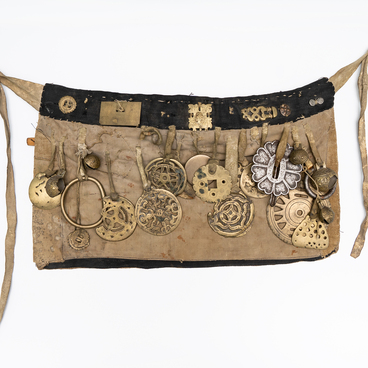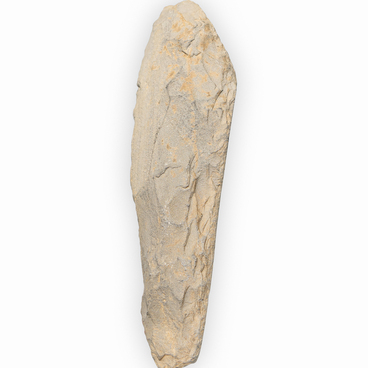The ritual sculpture of Savehi Voinku from the collection of the Museum of Local Lore was created in the first half of the 20th century. This is an anthropomorphic depiction of the standing spirit of a warrior shaman. The craftsman gave the head an ellipsoid shape, painted it black and covered it with a crown made of fish skin. The body of the sculpture is prismatic. Savehi Voinku is dressed in a robe made of fish skin pieces. The craftsman decorated the front of the clothes with stripes of black and brown paint, and tied the belt in a knot in front.
The front four-toed limbs of the shaman figurine are raised up. Straight legs are inserted into the chiseled holes and nailed to the bird’s body. The figure is distinguished by an elongated head and neck, the right wing is missing, sockets carved in wood represent eyes. The upper part of the bird was painted black and had paper circles glued to it.
The ritual sculpture of the Nanai people was an integral part of the spiritual traditional culture. According to the shamanic world order, the three spheres of cosmic space — the upper (celestial), middle (terrestrial) and lower (underground) — were the abode of many deities and spirits. The semantics of the sevhens often referred to various spirits-patrons of the elements and human beings.
Translated from the Nanai language, “sevhe” means the soul. The sculptural image in which the sevhe was placed was named “sevhen”. According to their appearance, such objects were divided into anthropomorphic and zoomorphic, as well as syncretic, which combined the features of both.
Sevhen’s functions depended on the task of the shaman. For example, the search for the soul by air was entrusted to birds, and by water to fish. Fish, deer, and dogs helped the shaman in the farewell ceremony for the soul of the deceased. The shaman’s movement through the air was carried out by loons, eagles, and seagulls, by water — taimens, and by land — moose, bears and tigers.
The shaman also used a
magical bird Kori (Koori, Hoori), on whose wings he returned from the realm of
the dead, bringing his soul there. According to the Nanai people, it was a bird
of enormous size with iron feathers and a spear tail. But in this guise, only a
shaman could see the Kori bird.






